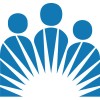
Effect of Owning a Service Dog on Military Veterans With PTSD
Physiological ResponsesSleep Disorders3 moreThe study aims to investigate the effects of a service dog on military veterans with post traumatic stress syndrome (PTSD). The investigators will use non-invasive measures of the physiological responses, data obtained via dairy keeping, accelerometer data estimating activity and sleep patterns, and baseline information including psychological measures validated for this specific population.

Early Detection and Treatment of Respiratory Sleep Disorders in Children With Down Syndrome
Down SyndromeObstructive Sleep Apnea of NewbornInterventional, comparative, open label, single-center study to demonstrate that an early (from 6 months of age) and systematic (every 6 months) screening of Obstructive Sleep Apnea (OSA) by polysomnography (PSG) in children with Down Syndrome during the first 3 years of life is associated with an improved neurocognitive development at the age of 3 years.

Dietary Oil to Improve Sleep Quality
Insomnia Type; Sleep DisorderThe purpose of this study is to identify if healthy cookies high in linoleic acid can change sleep quality and sleep architecture, blood fatty acid composition and be consumed with high compliance after eight weeks of consumption. The hypothesis is that consumption of healthy cookies for 8 weeks will improve sleep quality, increase linoleic acid in the blood and be consumed with greater than 80% compliance.

Impact of Iron Supplementation Treatment on Brain Iron Concentrations
ADHDIron-deficiency2 moreThe goal of the present study is to provide novel data to evaluate brain iron concentration as a mediator of the association between iron supplementation treatment and improvement in symptoms of ADHD and RLS in children, including PLMS. Twelve participants between the ages of 5 and 18 years will be recruited via Kennedy Krieger Institute's Sleep Disorders Clinic. Eligible participants will be asked to complete, at baseline (pre-iron supplementation treatment) and again at follow-up (post-treatment): 1) a 7 Tesla MRI scan, 2) five consecutive nights of RestEaZe™ monitoring, 3) caregiver-reported (or patient-reported if over the age of 10 years) Cambridge-Hopkins Restless Leg Syndrome questionnaire(CH-RLSq13), and 4) caregiver-reported ADHD Rating Scale-5. The treatment interval will be 3 months.

The Effect of Eye Mask Applied on Patients Undergoing Coronary Artery Bypass Graft Surgery
Coronary Artery DiseaseSleep Disorder2 moreIntroduction: Coronary Artery Bypass Graft (CABG) performed with open heart surgery technique is a successful operation in the treatment of cardiovascular diseases. Incision of the sternum region, saphenous vein graft, sternal retraction, presence of chest and mediastinal tubes cause pain. The pain experienced by the patients, the complications related to the disease they have, and the stress they experience cause an increase in sleep problems. In addition, the increase in sympathetic activity after surgery and nursing care interventions also affect sleep quality. The literature reports that sleep disorders affect the working physiology of the heart in patients with cardiac disease, adversely affect heart health and affect postoperative recovery. In addition, since sleep disorders are also associated with cardiovascular diseases, it is of great importance to improve the sleep quality of this group of patients. One of the non-pharmacological nursing interventions is the eye patch. The eye patch is an instrument made of fabric, with an elastic strap, aimed at pure darkness by diverting all light from the patient's eyes. The main physiological purpose of using an eye patch is to adjust the hormones melatonin and cortisol, which affect the circadian rhythm. As a result, it is thought that the eye patch will prevent patients from being exposed to excessive light in the hospital environment, the regulation of hormones and sleep quality will improve, and the pain will decrease. Purpose: The aim of this study is to examine the effect of eye patch applied to patients undergoing coronary artery bypass graft surgery on sleep quality and pain. Method: Individuals who have undergone coronary artery bypass graft surgery in accordance with the sampling inclusion criteria will be randomly assigned to the experimental and control groups by block randomization. After determining the groups, each patient in the experimental and control groups, whose written consent was obtained, will have the first researcher fill out the Descriptive Characteristics Form, Richards-Campbell Sleep Questionnaire and Numerical Pain Scale on the morning of the first night they spent in the clinic. Patients in the experimental group will be given the "standard care" and "eye patch" application in the clinic on their 2nd and 3rd nights in the clinic. The patients in the control group will only be provided with the "standard care" in the clinic on their 2nd and 3rd nights in the clinic. Patients in both groups will be asked to fill out the Richards-Campbell Sleep Questionnaire and Numerical Pain Scale forms in the mornings of the 2nd and 3rd nights.

Sleep and IR in Transgender Adolescents
Sleep DisorderInsulin Resistance1 moreDisordered sleep is a health issue with significant impacts on physical and psychological well-being that has increased in prevalence, but its impact on transgender adolescents has not been fully quantified. While there is found to be an impact of sex steroids on sleep, and sex-dependent differences in the impact of sleep duration and quality on insulin resistance (IR), there is limited available information regarding the impact of Gender Affirming Hormone Therapy (GAHT) for transgender individuals on sleep and IR. Our study aims to quantify the impacts of GAHT on sleep and IR in the pediatric transgender population as well as determine the degree of correlation of sleep to IR in this population.

Skeletal Response to Simulated Night Shift
OsteoporosisCircadian Rhythm Sleep Disorder1 moreThis small intervention study will determine if simulated short-term night shift work (NSW) negatively alters bone metabolism. The specific aim of the study is to determine if NSW acutely uncouples bone turnover markers (BTMs), if sympathetic tone is a mechanism for this disruption and if a resumption of a normal sleep/wake pattern reverses BTM uncoupling. Our hypothesis is that NSW will reversibly uncouple BTMs via increased sympathetic nervous system (SNS) tone.

Factors Associated With Infant Circadian Rhythm, Growth, and Temperament
Circadian Rhythm Sleep DisorderJet Lag TypeThe goal of this observational study is to learn about the role of modifiable factors affecting infant circadian rhythm so that recommendations can be made for better health outcomes for the mother and infant. The main questions it aims to answer are: What is the association of prenatal and postnatal maternal circadian clock with infant's circadian clock at 3 months? What is the association of birth outcomes, maternal factors, and environmental factors with infant circadian clock at 3 months? What is the role of infant circadian clock on infant growth and temperament at 6 months of age? Participants will complete a set of questionnaires and provide saliva samples during third trimester of pregnancy and at 3 months after birth of infant.

Effect of Propofol on Postoperative Sleep Quality in Elderly Patients With Sleep Disorders
Sleep DisorderThis study intends to conduct postoperative sleep intervention for elderly patients with sleep disorders undergoing surgery. We hope to explore whether propofol can improve the postoperative sleep quality of elderly patients with sleep disorders, prevent the occurrence of postoperative delirium in elderly patients, relieve patients' pain, promote patients' postoperative rehabilitation, and provide reference for realizing the rapid rehabilitation of elderly patients with sleep disorders through intravenous administration of research drugs, on the premise of improving patient comfort and ensuring patient safety.

Validating the Use of a Subjectively Reported Sleep Vital Sign
Obstructive Sleep Apnea (OSA)Insomnia3 moreSleep disorders are commonly under-recognized in the primary care setting and available screening tools are often are limited. The study inestigators hypothesize that the use of a novel subjective sleep vital sign (VS) will improve recognition of patients with sleep disorders and can be utilized to track outcomes to sleep therapy.
